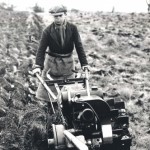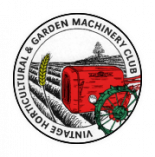Forum Replies Created
-
AuthorPosts
-
September 14, 2015 at 12:42 pm #14437
 trusty220Keymaster
trusty220KeymasterGetting colder again….. (sorry)
September 13, 2015 at 7:50 am #14428 trusty220Keymaster
trusty220KeymasterYou’re still along the right lines but have a little further to go!
Keep trying!
September 10, 2015 at 5:20 pm #14410 trusty220Keymaster
trusty220KeymasterOne of you was on the right track in a roundabout way; I’m not saying which one, though!
Keep going!
September 10, 2015 at 3:12 pm #14407 trusty220Keymaster
trusty220KeymasterNice try, but I’m afraid you’re wide of the mark. It looks like everyone is fooled by this one judging by the lack of response.
Anyone else fancy a guess?
September 8, 2015 at 3:25 pm #14386 trusty220Keymaster
trusty220KeymasterWhen I used to earn my living “on the spanners” back in the 1980’s we used to have a customer who had a Solo set of equipment. It was very revolutionary for the time because it consisted of a small engine that came in it’s own plastic casing that you could use on various attachments- I think he had a water pump and a chainsaw- and you simply attached it by turning a lever that worked a cam to lock it onto the machine that you wanted to power and it drove directly off the crankshaft.
I can’t remember if it was 2 or 4 stroke but it was somewhere in the region of 25cc.September 7, 2015 at 9:58 am #14365 trusty220Keymaster
trusty220KeymasterWill be with you on Saturday morning. I’ve just got my 3-speed Trusty going for the first time in years so I’ll bring that with the Greyhound Plough to get the rust off it.
Shall I bring the other one with the plough seat for people to try? It’s equally rusty and so could do with a bit of work if anyone wants to have a go.
August 28, 2015 at 12:45 pm #14223 trusty220Keymaster
trusty220KeymasterFor some time now the rally field has been classed as a public right of way and subject to the same rules and regulations as any normal road, hence the need for insurance to cover road risks.
Whilst the club insurance does cover you to the value of £5,000,000 for public liability if you exhibit a pedestrian-operated machine, it does not extend to machinery that is classed as “ride-on” because of the huge variety of machinery that it encompasses. That’s why “ride-on” machinery has to be insured separately.
I know pedestrian-controlled machinery has an equally wide variety but, because they are pedestrian-controlled they tend to operate at a much slower pace and so their capacity to do damage to the general public is deemed to be a much lesser risk.
I hope that explains why rally organisers insist on insurance.
August 26, 2015 at 7:04 am #14204 trusty220Keymaster
trusty220KeymasterCome and see us on the club stand at Newark to introduce yourself. Are you going to exhibit anything this year?
Thank you for your kind words; we always try to help like-minded people.
Geoff RavenhallAugust 17, 2015 at 6:10 pm #14092 trusty220Keymaster
trusty220KeymasterI think Charlie may be right- they don’t specify which Trusty product and by 1963 the Earthquake was their biggest seller. Certainly the Earthquake brochure had a picture of the Director’s wife using a Tarpen attachment fitted to an Earthquake (it was taken in the back garden of The White House, the home of all Trusty products).
Sorry for the poor reproduction, I will try to find a better copy.
August 17, 2015 at 2:15 pm #14086 trusty220Keymaster
trusty220KeymasterThat’s the way a lot of farmers used to test for overheating- they used to push a long, pointed steel rod into the centre and it would conduct the heat to the outside.
It’s amazing what memories our club members have when they start to get stirred up! Well done, again, to everyone who had a guess.
Has anyone out there got anything as interesting that they could test our knowledge with?
August 16, 2015 at 5:09 pm #14073 trusty220Keymaster
trusty220KeymasterA little bit overdue but worth the wait.
The object is a boring tool for preventing spontaneous combustion in haystacks- that’s why I said that one or two of you were getting warm.
If the haystack was seen to be heating up (steam coming out of the top, or even smoke) then this borer was taken to the top of the stack and wound down to form a chimney and relieve the heat build-up within the stack. The bottom of the cylindrical piece is sharpened and it’s weight would take it into the stack if the handles were rotated. It would have to be lifted out every couple of feet to empty the cutter, then re-entered into the hole until the whole of the cutter had been inserted. Because it is so heavy you couldn’t use it in a horizontal way, it would have to be vertical.
Of course haystacks don’t normally heat up or catch fire if the hay has been made properly, but if the weather has been wet the farmer wouldn’t have much choice and would have had to make the hay with a higher than normal moisture content. It is then that the problems start with microbes within the stack starting a fermentation process which generates heat to such an extent that some stacks have been known to catch fire.
I hope that sheds a little light on this very interesting device; it certainly gives us an insight into old methods of haymaking.
Thank you all for participating in this little quiz. Maybe someone else would like to test our knowledge with another mystery item? The field is wide open……
August 13, 2015 at 7:10 am #14041 trusty220Keymaster
trusty220KeymasterAgain, some guesses were getting warm, some wide of the mark. Answer on Saturday night if nobody comes up with it before.
Keep coming up with the ideas!August 11, 2015 at 7:47 pm #14014 trusty220Keymaster
trusty220KeymasterGetting colder again!
August 11, 2015 at 10:44 am #14007 trusty220Keymaster
trusty220KeymasterGetting warmer…..
August 11, 2015 at 7:14 am #14003 trusty220Keymaster
trusty220KeymasterIt was quite a common thing to do in the 1940’s. Don’t forget that metals like bronze would have been a horrendous price (steel was in short enough supply) and so wood was the next best thing. It soaks up the oil and grease to provide a reservoir for the bearing surfaces and is low cost to replace.
I replaced mine with some offcuts of gas main (I think it’s called Alkathene pipe) and they have worked well for the last fifteen years.
Nothing wrong with wood, though; don’t forget that de Havilland made Mosquitoes and Vampires from it! -
AuthorPosts

